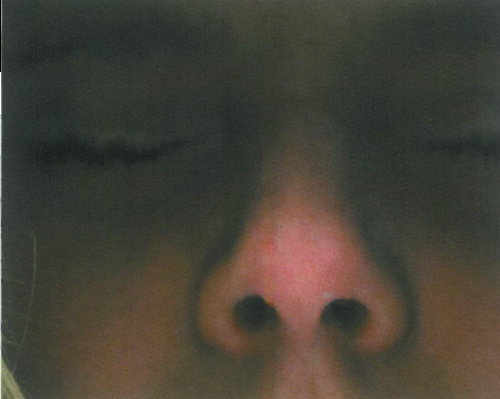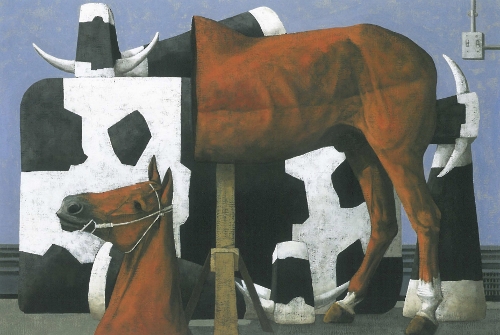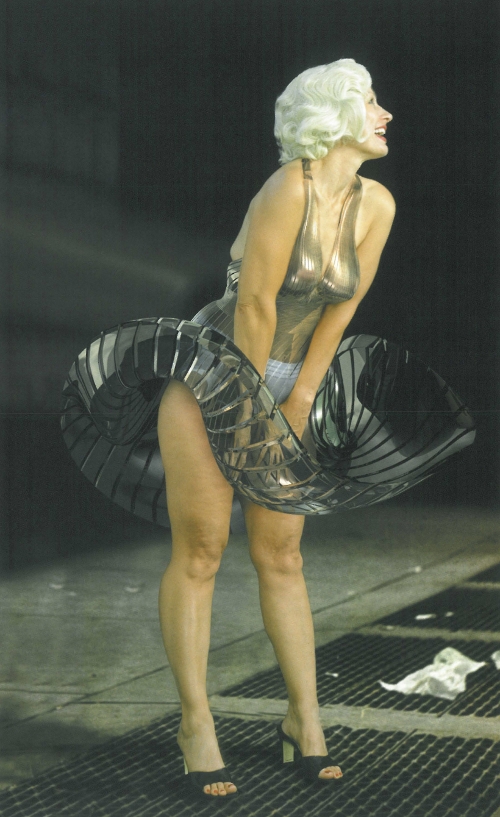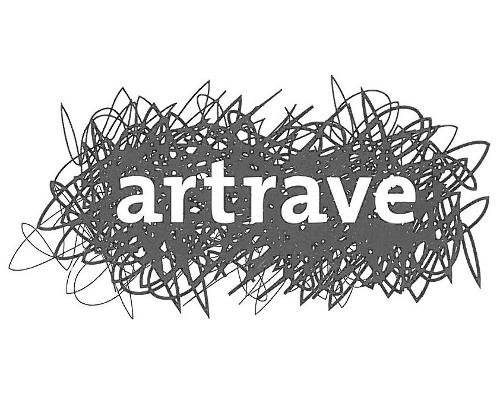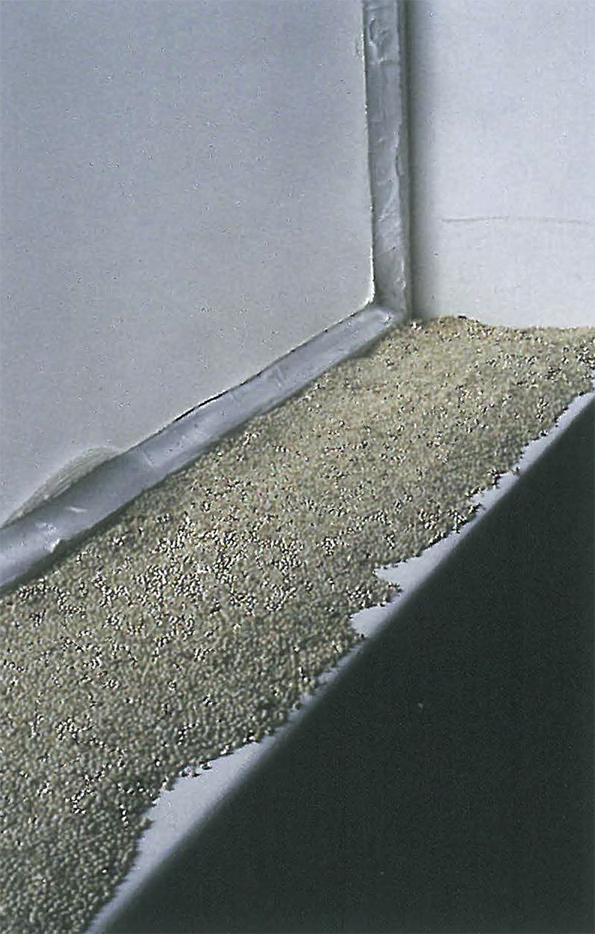
Entering LSSp, the Letitia Street Studio space, is an engaging affair – first you have to negotiate a range of doors, stairs, corridors and science-laboratories cum artists-studios in a old disused college. I'm in the middle of the exhibition, A Loft, before I realise and am standing before a giant pet-toy: a budgie mirror with a bell. I recognise it immediately and know exactly where I am. The world has changed and I'm around 10 cm tall, with feathers. The space is clean, too clean: birdcages are always full of husks, guano and dust-mites. (I have a thing about avian dust-mites.)
It is like walking onto a film set: there's a narrative here, somewhere – but all I have to activate this sense are the set's pieces. The scale of these objects is anthropomorphic and disarming, and I can't pin down the genre either: horror, noir, weird porn, surrealist, romantic comedy, it's tres strange. Weird.
Beyond the large pink-rimmed 'budgie's' mirror are all the accoutrements of a domestic bird-cage: a red ladder with bell attached, large birdseed balls and a burgeoning seed 'tray.' There is something rudimentary about these objects, manufactured to the point of appearance only, they retain a trace of the purposeful trip to the hardware store and to the marine merchants for structural materials. The objects clearly are not fetishised and the space is more than merely a reliquary – it is too ordered and too new, suggesting the site of either a theme party or a peculiar ritual. A 'sense' of a bird-cage is implicit and an absence of actual bars is only mildly disarming – further discomfort is created by random inconsistencies: the room is L-shaped and the proportions are all wrong, and, in fact, the space is redolent of an incubator. Industrial safety lights cast a hard light on newly painted walls. The effect is mildly hallucinogenic, though the space sits precariously between a considered invention, the tacky but serious dream-world of D.I.Y. consumerism and industrial camp.
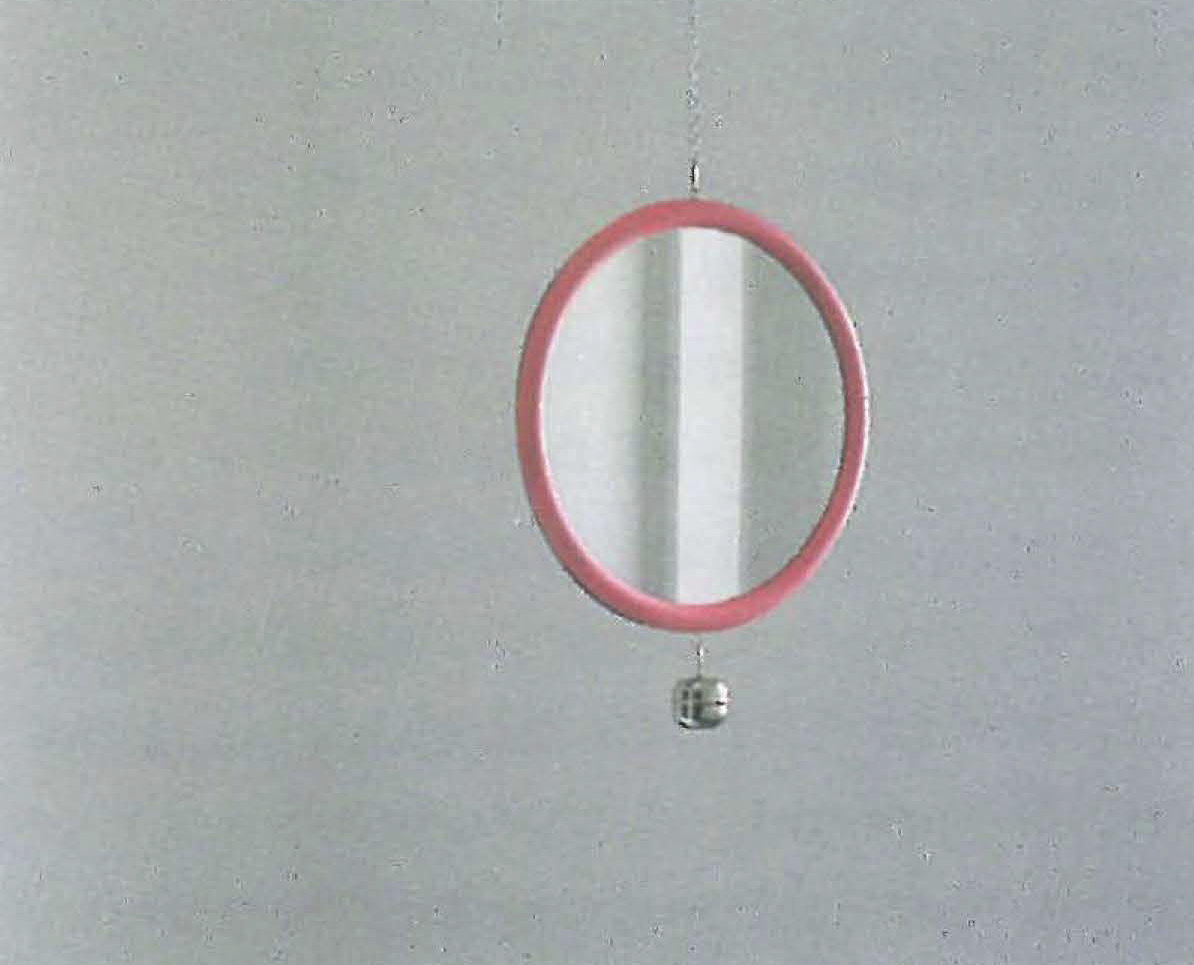
At the far, narrow end of the space and placed high and altar-like is a small light-box containing an x-ray of a splayed, supine budgie. The 'budgie' conclusion feels obvious enough – but then again it could easily be a bat. Hung to be looked up to, at the official height of the icon, the devotional and, sometimes, the memento mori, the image should evoke sadness or fascination - but it doesn't. While this image would sit easily with a collection of medical photographs (where it belongs) a strange device (a tiny bucket, or a bell?) placed over the frail bird's head causes some fairly solid and ongoing amusement. Science isn't meant to be ludicrous, and besides the image with its cold monotone greys and its correct 1:1 scale doesn't easily belong to the bright, big bird cage. The humour generated by the x-ray doesn't exist in the safe confines of the imagination; it's real, it's cold and it's mortal – just the outcome feels the same.
Hung perpendicular to the iconic x-ray, and not immediately visible for the viewer, are two modest scale, colourful photographic images. As a pair of figure/ground studies we can assume their simple purpose is to mete out a notion of time passing: they contain the same figure in the same room. The figure, presumably the artist, is wearing a rubber bird's head (a tragi-comic raptor / rooster / parrot?) and is otherwise completely clad in comforting clothes: loose, formless, around-the-house style wear. Masked and veiled, the artist is without a body, a bird, performing – safe from the audience. The articulation of 'bird' posed by the non-bird is a potent element: at once it is a fit of abstracted musing, theatrical, absurd, handcrafted and pathetic, and undeniably whimsical, permissible, indulgent and capricious. The performer is in a bedroom, a private space, the curtains drawn and domestic clutter is everywhere. Oddly mirroring the figure, the room reinforces the condition of private abandon. What I cannot grasp is the level of the obsession or what, in fact, the obsession is: the intimate location and inwardly focussed performance hints at the erotic, a realigned sexual drive for some anonymous participant. A recognition of this, despite its unfathomable condition, invests the objects with circling layers of possibility as a site for& well, probably only God knows.
The three elements, the objects, the x-ray and the photographs do not sit easily together, but then, the potential subject is not compliant. The photographic images assume a priority for understanding the objects, precisely because they are logically prior to the installation. The x-ray? Whether the elements create an oversize shrine for some dead pet or whether they are an intriguing set of sex toys, matters little. There is a living mind at work here, and I wouldn't mind meeting it in a bar.





